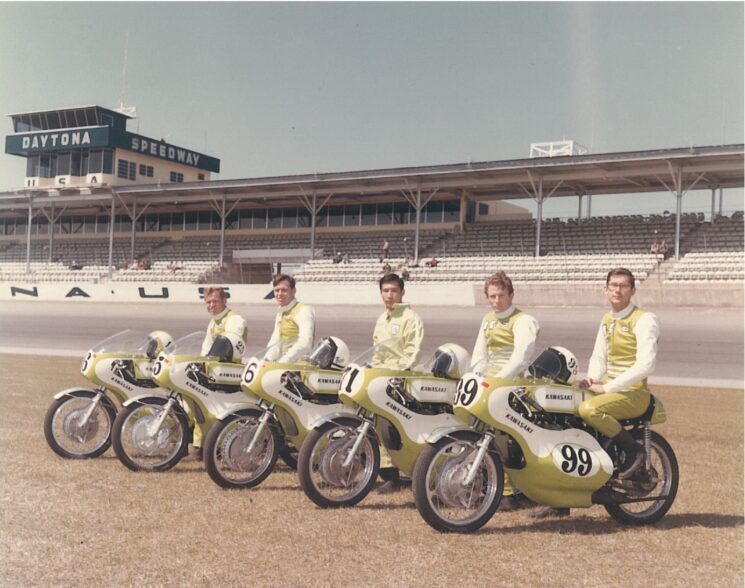
The Daytona 200 is one of my favorite races of the year. This year I was perusing some historic photos of the race when I came across one from 1969. It’s a faded photo from Kawasaki showing five race bikes and riders trimmed in green and white. Of course they’re Kawasaki racers, they’re in green.
Seeing that green brought back memories of my dad taking me to school in the 1980s on the back of his green KZ440, and my own old Ninja 500. It’s the same color as many of the new Kawasakis you’ll find on a showroom floor, whether those are dirt bikes, Jet Skis, or even electric bicycles. But that 1969 photo shows the first time that Kawasakis were painted in their now-famous color.
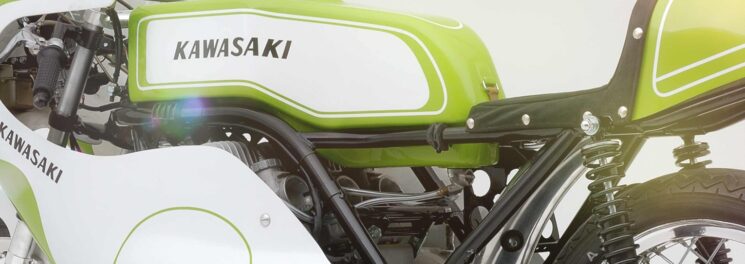
But where did the Kawasaki Racing Green color come from? In 1969 Kawasaki was looking to make a splash at the most important race on the American calendar. At the Daytona 200 racers used the high banks of iconic NASCAR superspeedway, and riders fought hard on the dangerous circuit. That 1969 race was also on TV in color and Kawasaki wanted to stand out. And, those bikes did.
Kawasaki shocked the paddock with a bevy of 250cc A1RA and 350cc A7RA factory racers painted in green and white. Racers are a superstitious lot and green had always been a jinxed color. But the team of talented riders including Ken Araoka, Art Bauman, KMC employee Walt Fulton III, Dick Hammer and Cal Rayborn, threw out old superstitions and also wore green-and-white one-piece suits.
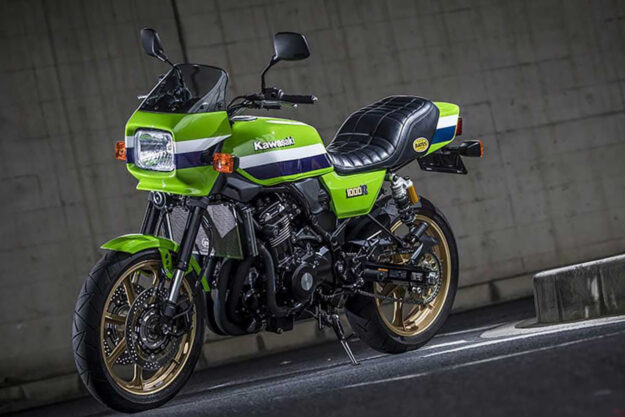
According to Kawasaki, the 1969 KMC National Sales Manager Don Graves and National Marketing Manager Paul Collins, worked with Akashi designer Chris Kurishima and famous Los Angeles painter Rollin “Molly” Sanders to come up with the color. Sanders was famous as Paint by Molly for doing wild paint jobs on choppers in Southern California. But Molly decided to repurpose an AMC Javelin green color for the racers. Essentially, it was a marketing stunt to make the bikes stand out.

It worked. The bikes were easily identifiable and though the color wasn’t intended to stick around, it immediately became iconic. The green was solidified as Kawasaki’s race color when the H2R “Green Meanie,” a 748cc two-stroke three-cylinder bike debuted. Gary Nixon won the AMA Road Racing Championship on that bike in 1973. In the 1970s, green racing Z1s were hard to beat. And, from 1978 to 1982 Kawasaki Racing Green was almost always on the podium in GP250 and GP350 racing.
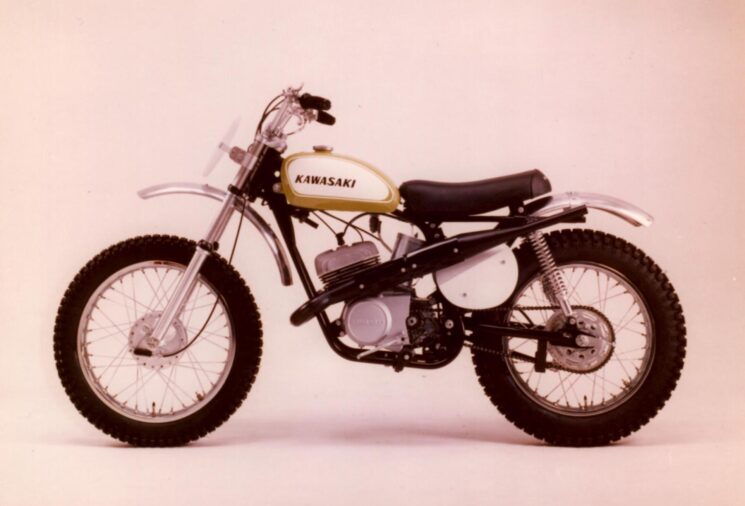
Though the bikes didn’t win Daytona in 1969, Kawasaki decided to lean into the unconventional color. Not long after the Daytona 200, Kawasaki debuted the color on the 1969 F21M “Greenstreak,” a 238cc scrambler.
Molly Sanders, however, didn’t stop at Kawasaki green. He also created Kenny Roberts’ iconic black-and-yellow strobe paint for his Yamaha race bikes, the Buick Grand National logo with the swirling turbo in the 6, as well as racing colorways for Toyota.
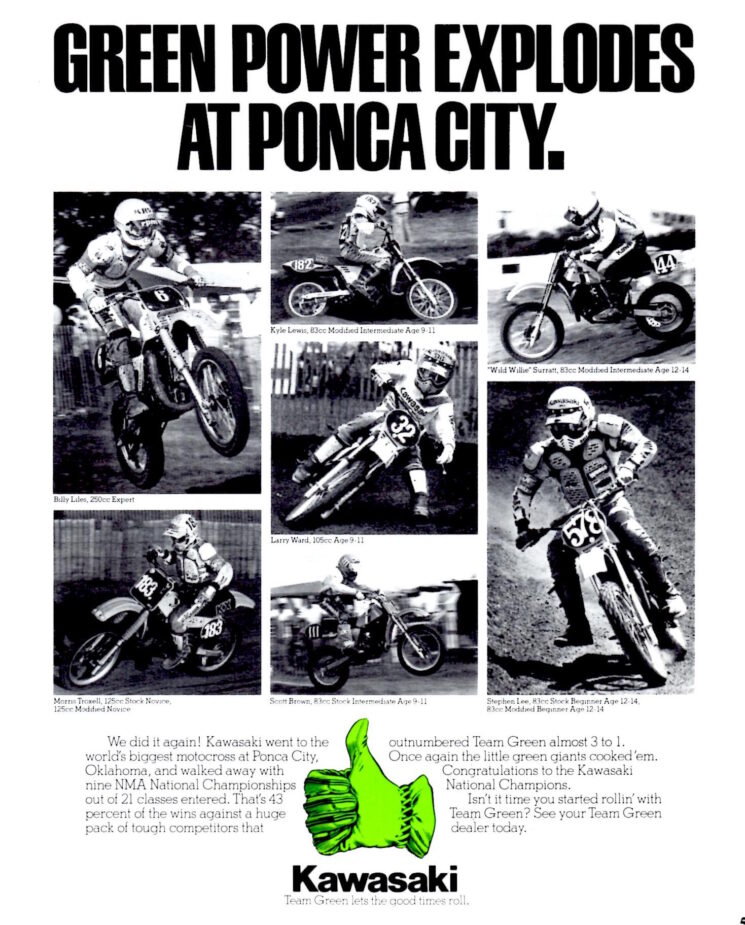
Green paint, though, does have a dangerous history and superstitious racers and artists avoided it. For centuries, green paint was made with arsenic and it would literally burn itself into a painter’s canvas. The dye was so deadly that some historians even think green wallpaper could have killed Napoleon Bonaparte. For racers, especially stock car drivers, it was considered back luck. Strangely, though, green may be a bit safer on a motorcycle: It’s the first color a person’s optical sensors read.
This year’s MotoAmerica Daytona 200 is scheduled for March 11, and you can be sure there will be some green machines mixing it up at the front of the pack.
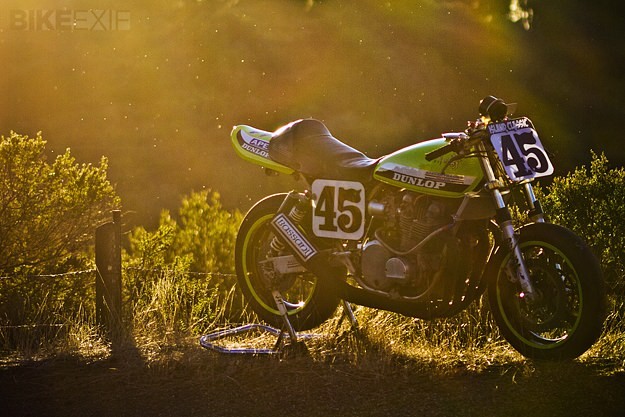
Kawasaki Racing History | Instagram